#gutenberg bible
Photo


Lucifer with a dying star halo
How you have fallen from heaven, morning star, son of the dawn!
You have been cast down to the earth, you who once laid low the nations!
(inspired by @manywinged (x))
307 notes
·
View notes
Text



From my trip to the Morgan Library, New York City, this summer before I started grad school
#dark academia aesthetic#dark academia#light academia#medieval#medieval art#Gutenberg Bible#morgan library#new york city#New York#old books#bookstagram#bookblr#personal#mine
42 notes
·
View notes
Text



june 2022
i also took a trip to dc this summer! here are some highlights from that!
#studyblr#academia#travel#uni#university#college#light academia#dark academia#study#study aesthetic#washington dc#capitol#washington monument#gutenberg bible
58 notes
·
View notes
Text
23rd February
There Is No Frigate Like a Book by Emily Dickinson
On this day in 1455, the so-called ‘Gutenberg Bible’ was printed. In the first example of mass production of a book, 180 “copies” of the original Bible were printed by Johannes Gutenberg, inventor of the printing press. The arrival of large scale printing of the written word was to change the world. Dickinson’s poem extols the power of literature to transport the reader into a different reality.

Sources: Ann Ronan Pictures/ GettyImages/ www.history.com
There Is No Frigate Like a Book
There is no Frigate like a Book
To take us Lands away;
Nor any Coursers like a Page
Of prancing Poetry -
This Travel may the poorest take
Without offence of Toll -
How frugal is the Chariot
That bears the Human soul.
The availability of the Bible - in the vernacular of spoken living languages rather than in the Latin of the Church - put the Word of God potentially in the hands of every lay Christian. The need for the intercession of the priesthood began to be questioned by religious dissenters and the seeds of the Reformation were sown.
6 notes
·
View notes
Text


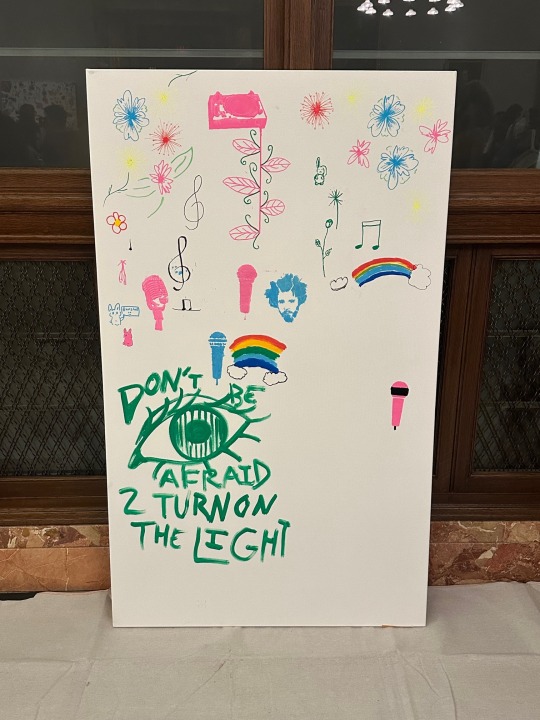
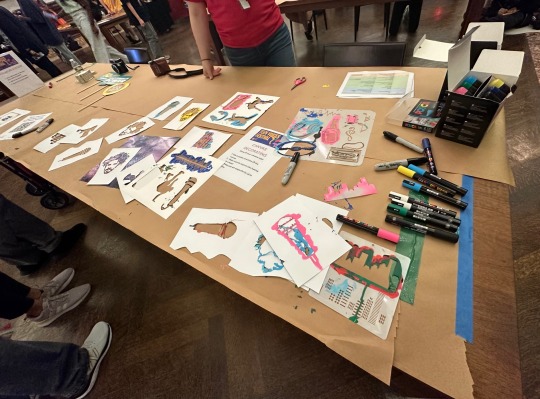





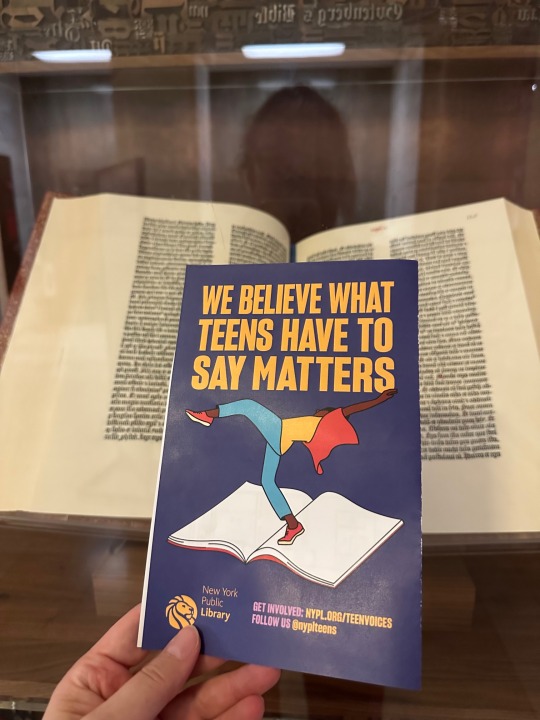
The Teen Voices Festival at NYPL, Part 2
1 note
·
View note
Text
0 notes
Text
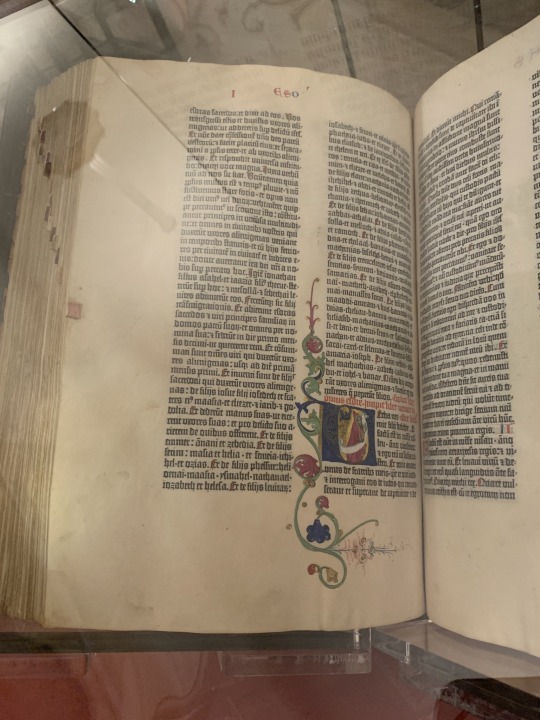
One of the remaining copies of the Gutenberg bible. Seen at the Huntington Gardens and Library in California.
0 notes
Text
The Gutenberg Bible – World’s Most Famous Bible
Johann Gutenberg was a German skilled in engraving and metalworking. He and his associates, Peter Schoeffer and Johann Fust, printed the Gutenberg Bible in Germany’s Mainz in 1455. Thus, Gutenberg made the scriptures potentially accessible to every individual. According to some sources, just 48 copies of the Gutenberg Bible are known to have survived, of which 36 are printed on paper and 12 on vellum. To own a piece of history, you can get a facsimile reproduction of the Gutenberg Bible.
The Gutenberg Bible in Latin text is a two-volume work, which was printed in 42-line columns. During the later stages of this Bible’s production, six compositors worked on it simultaneously. Sometimes, the Gutenberg Bible is called the Mazarin Bible, because the first copy that the bibliographers described was located in Cardinal Mazarin’s Paris-based library.
Knowing Johann Gutenberg Better
In the 1440s, Johann Gutenberg started experimenting with new ways of printing, similar to several other Europeans. Everyone was trying to find a cheaper and faster way to produce books. Typically, the Europeans used woodcuts or hand stamps, which were an improvement over handwritten text. Yet, they were still utterly slow.
Though printing with moveable type was developed earlier in East Asia, it was still unknown in Europe. The earliest type of this form of printing is documented in some 11th century Chinese sources. In the 13th century, a moveable metal type was built in Korea. From the early 15th century, several officially commissioned fonts began being created in Korea.
Meanwhile, Johann Gutenberg continued with his experiments. Since he was skilled in engraving and metal working, he had an advantage over many others. During his stay in Strasbourg, he perfected quite a few unique ideas. One was an adjustable hand-held mold that could be used to cast any letter precisely and in large quantities. Another was a sturdy tin alloy that melted and solidified rapidly without distortion. He also developed a modified printing press and oil-based ink.
Though it took him many more years, he finally finished printing the Bible in 1455 using moveable type. In Europe, the Gutenberg Bible was the earliest full-scale work that was printed with the use of a moveable type.
Features of the Gutenberg Bible
This Bible had no page numbers, title page, and innovations to differentiate it from a manuscript copyist’s work. Apparently, this was what Gutenberg desired. Though the Gutenberg Bible used space uneconomically, it depicts a certain level of technical efficiency not significantly improved upon prior to the 19th century. This Bible’s Gothic type is grand in appearance, has a medieval feeling, and is a little less pointed and compressed than other examples that emerged soon.
Final Words
The technological breakthrough of Johann Gutenberg - the German printer, is a landmark in the history of printed Bibles. Had it not been for his relentless pursuit of cheaper and speedier printing modes during his time, the Gutenberg Bible wouldn’t have seen the light of day. Since not everyone can afford the steeply-priced rare original copy, the best way to own the Gutenberg Bible is to buy a facsimile reproduction from a reputed dealer of rare and antique Bibles.
Original Source:
http://gutenberg-bible.com/the-gutenberg-bible-worlds-most-famous-bible.html
0 notes
Text


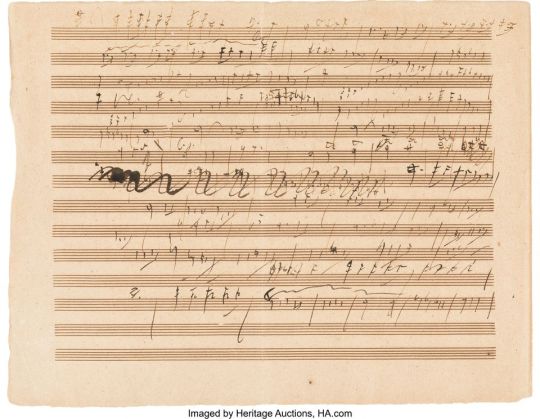


A variety of objects, including a handwritten Mozart manuscript, a flight book from the Hiroshima bombing, a fragment of the Gutenberg Bible, and a cassock used by Pope Francis, are up for bid in an online sale by US-based Heritage Auctions.
The Historical Platinum Session Signature Auction features 52 pieces that are said to span "500 years of human innovation" and cover subjects like literature, science, and history.
"We start with a Gutenberg Bible leaf, so 1452 about, all the way up to material that went to the moon on Apollo 11," said Samantha Sisler, manager of speciality collections auctions at Heritage Auctions.
Only a few dozen volumes of the Gutenberg Bible, the first significant printed book in history, are still in existence.
A logbook kept by U.S. Army Air Forces officer Captain Robert A. Lewis, one of the pilots of the Enola Gay, the aircraft that dropped the first nuclear weapon ever used in warfare over the Japanese city of Hiroshima on August 6, 1945, is one of the top lots, with a bid of $400,000 on Thursday.
"You have eight pages of his thoughts...hour-by-hour, minute-by-minute of exactly what happened...on the plane ride to Hiroshima," Sisler said.
"And then they dropped the bomb. And he literally writes: 'There will be a short intermission while we bomb', period...It is incredibly significant...words can't describe what you feel when you hold this thing in your hands. Something that witnessed the dawn of the nuclear age."
Other lots include photos and letters, as well as a telescope that belonged to the astronomer Clyde Tombaugh, who discovered Pluto. These goods are related to American aviation pioneer Amelia Earhart, who disappeared in 1937 while undertaking a round-the-world trip.
Additionally, there are drafts of writings by authors like Arthur Conan Doyle, the creator of Sherlock Holmes, and working manuscripts by Ludwig van Beethoven and Wolfgang Amadeus Mozart, respectively.
"They have corrections and annotations...you can see their genius at work as they're writing, as they're correcting, as they're changing their mind and refining," Sisler said.
She stated that it was the first time that Heritage Auctions has combined a number of specialties in response to the diverse interests of collectors.
The auction will end on July 16.
#mozart#hiroshima#gutenberg bible#pope francis#auction#america#beethoven#trending#follow#likeforlikes#viral#home#love#instagram#instagood#instalike#art#heritage#explore#explorepage
0 notes
Text
Watch "I promise this story about fonts is interesting" on YouTube
youtube
Dont you love when somebody is really passionate about some little weird aspect of something?
Don't you love when somebody doesn't look like a complete nerd but is unabashedly a total nerd?
Do you love the history of art and music?
Do you love when someone draws a thread through every part of human history in some weird way?
Do you love when somebody stans early Soviet artists but doesn't mention the communism part?
Well I recommend this video.
#art history#music history#typography#history#language#art#technology#karl marx#graphic design#punk#grunge#andy warhol#capitalism#rebellion#Gutenberg#ancient greece#ancient rome#bible study#Youtube
14 notes
·
View notes
Text
Gutenberg and Luther: Disruptive Technology (Essay)
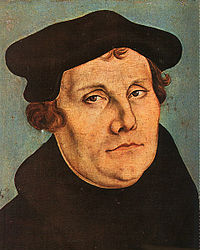
Martin Luther
Technological innovations that "evaporate" a single market are sometimes called "disruptive technologies." Kodak is an example of a company that faced a life-or-death crisis because it stuck to conventional film despite the widespread use of digital cameras. When photographs are stored and printed electronically, the traditional film camera market will 'evaporate'.
Now that the information medium that replaces "paper" has become commonplace as it is today, looking back, we can see that "paper = letterpress printing" was also a "destructive technology" in the Middle Ages.
In medieval Europe, instead of what we now call paper, they used "parchment", a "paper" derived from animals, so copying sutras by hand was inefficient. Cai Lun of China invented paper in 105 A.D. A paper craftsman who was taken prisoner by the Tang Dynasty in China during the Battle of Taras in 751 passed on to the Saracen Empire and passed on his paper-making skills to the Saracen Empire for many years. In 1189, it was introduced to France.
And here comes a person who uses medieval "disruptive technology". Johannes Gutenberg (1398?-1468). In 1455, he printed the Old Testament and the New Testament. At that time, people thought that hand-copying sutras would not have been possible in such a large quantity, and that it was the work of the devil. (At that time, the Bible was written by hand, letter by letter.) Gutenberg himself was betrayed by his business partner and felt bitter, but continued the printing and binding business.
Then, when it became possible for anyone to obtain the Bible relatively cheaply, the momentum for the Reformation increased, and Martin Luther (1483-1546) raised his voice. (By the time he was born, Gutenberg's Bible was already circulating.)
As we have seen, "paper = letterpress printing" is very similar and parallel to the modern IT revolution. Perhaps it is a "disruptive technology" that is more drastic than the IT revolution or equivalent. Today's Twitter and Facebook on the Internet have moved Arab youth and produced the "Jasmine Revolution." The situation is very similar in the case of the Reformation. Because there is no need for a professional priest like the Catholic Church, and each person is now able to face the Bible. It is a gift of letterpress printing that can print in large quantities = bookbinding.
7 notes
·
View notes
Photo
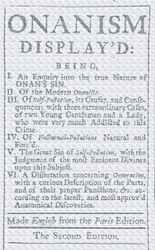
https://www.gutenberg.org/ebooks/69311
Creator
United States
Title Onanism display'd: being, I. an enquiry into the true nature of Onan’s sin. II. of the modern Onanists. III. of self-pollution, its causes, and consequences; with three extraordinary cases, of two young gentlemen and a lady, who were very much addicted to this crime. IV. of nocturnal-pollutions natural and forc’d. V. the great sin of self-pollution, with the judgment of the most eminent divines upon this subject. VI. a dissertation concerning generation, with a curious description of the parts, and of their proper functions, &c. according to the latest, and most approv’d anatomical discoveries
Original Publication United Kingdom: E. Curll,1719.
Credits Richard Tonsing and the Online Distributed Proofreading Team at https:
//www.pgdp.net
(This file was produced from images generously made available by The Internet Archive)
Language English
Category Text
EBook-No.69311
Release Date Nov 7, 2022
Copyright Status Public domain in the USA.
3 notes
·
View notes
Text
youtube
Exploring 27 Random and Ridiculous Facts About Germany | Interesting facts about germany
Welcome, geography enthusiasts, to GeographyGuru99, your go-to channel for all things geographical! Today, we embark on an exciting journey to the fascinating land of Germany, known for its bratwurst, beer, and iconic Brandenburg Gate. In this captivating video, we've curated a list of 27 truly unique, random, and at times, utterly ridiculous facts about this European powerhouse. Get ready to be intrigued, amused, and perhaps even a little shocked as we uncover the hidden gems of Germany's culture, history, and quirks. Join us on this virtual adventure through Germany's diverse landscapes and vibrant cities, all while learning some mind-boggling facts that you won't find in your average travel guide.
#germany facts#highest point in germany#germany fun facts#german culture#information germany#german history#germany gdp#gutenberg bibl#interesting facts about germany#10 interesting facts about germany#facts about germany#top 10 germany facts#interesting facts#geography guru#geography#geography facts#German Heritage#Germany Travel#germany tanks problem in world war 2#germany interesting facts#facts channel in english#Youtube
0 notes
Text
u know if they didn’t invent the printing press we would’ve never been given better educations as the masses, and therefore we would never be able to read mpreg fanfiction. truly the definition of “a butterfly flaps its wings in africa that causes a hurricane in india”
#fanfiction#gay fanfiction#gay pregnant dudes#or maybe they’re seahorses#johannes gutenberg needed his toes sucked fr#and also the bible was the first thing printed on it so what does that say about jesus and god#actually nothing i think#what am i saying
1 note
·
View note
Text
Classical Correspondences
"Correspondences are just things people made up." various tumblr blogs
Working with a local witch community, one thing I've noticed is that a lot of witches coming from very (sometimes very very) Christian background haven't really been exposed to "Classical" education in the sense of Greek, Roman and Medieval history and thought, except for a sort of biblical overview.
This is the Bible belt and often the question isn't - "Well, you've read Greek mythology, right?" but "were you permitted to read Greek mythology?" Which has left a big gap in the foundational understanding of where some of our witchcraft and broader magical work comes from, including those correspondence lists you see everywhere.
In broad terms, the Egyptians influenced the Greeks who influenced the Romans who influenced the early Christian church and most of medieval Europe. This gives a sort of historical and geographical foundation for our Classical Correspondences. And a lot of other things but right now, let's just look at correspondences.
The periods above give us a long history of men (and sometimes women, but honestly, this was mostly an old boys club) looking at the universe and saying "how does all this fit together?"
In an attempt to answer that question, they started looking at connections between things to try to understand them. Why does valerian smell that way? Why does camomile also make you feel relaxed? Are these two related somehow? Can we find a way to organize them?
Isn't that what botany does? At least for plants?
Yes. And we can see that because both these plants fall under the influence of Jupiter they are kingly, helpful, and aromatic, imparting a feeling of relaxation and expansion.
Umm, Tea, it doesn't say that in my botany textbook.
You have the wrong textbook. You need Culpepers Complete Herbal which is the culmination of all the plant knowledge you'll every need. Says so in the title - Complete. And it was published during the reign of Queen Elizabeth, so you know it's up to date. Queen Elizabeth the First. A time of great scientific progress. (its free on Project Gutenberg) Though of course Culpeper worked from reliable sources like Aristotle. And Pliny the Elder, who wanted to categorize everything. (Pliny is probably best known on Tumblr for that elephant religion post that makes it's way around now and then. Pliny is not a reliable source for elephant religion or, well, other topics. But I digress.)
Let's break things down a bit. By Jupiter we mean the planet Jupiter, not the god. (Though Jupiter does fall under Jupiter). The Romans categorized according to the seven ruling planets - Sun, Moon, Mercury, Venus, Mars, Jupiter, Saturn - with additional influence from the four Greek elements - earth, air , fire, water as well as the astrological signs. They assigned properties to each of these that fit with their view of that planet/element/sign. Jupiter is kingly, along with other properties.
You take everything - plants, metals, gem stones, colors, parts of the body, emotions - and you figure out which ruling planet they fall under and you have a system of correspondences based on the planetary properties. (Venus for love, Mars for courage and strength, Mercury for speed and communication, etc.)
Tea - you're missing a couple of planets and the sun and moon aren't planets.
These are the 7 classical planets or the 7 wandering stars. These were the seven things that could be seen with the naked eye and didn't follow the fixed pattern of the stars. From the Greek word meaning "to wander". We are standing on earth so obviously it's not wandering around the sky. (We have correspondences for Uranus, Neptune and Pluto that were added later)
Got it. So they developed a system of correspondences using the classical planets and used it for witchcraft?
Of course not. From the Romans onward, witchcraft was generally illegal. (Greece disapproved but the laws were a bit different.) So no one would have developed an expansive system of correspondences for witchcraft and made it public.
These were scientific. And for medicine. And, well, for occult practices that were definitely not witchcraft! (Look up high magic vs low magic but basically, it was an economic difference and being poor was bad.)
The important part was - this was science. It had rules. It had structure. They didn't just randomly assign meanings to plants. They developed an entire system of classification and examined each plant to decide where it fit under that system. Sometimes plants could fall under multiple planets. Sometimes different parts of a plant fell under a different influence. And when used in medicine, what ruling influences the patient fell under could affect the treatment.
I don't want to use them.
It's hard to avoid them. They come into witchcraft through Western Ceremonial Magic but also through pure practicality. See, some of them work remarkably well, possibly because of the medical aspect of things. In medicine there had to a be a probability of success because if everyone died, no one would use them.
And from a witchcraft perspective - a lot of them make sense to the way we work. Plants with hallucinatory properties are often classified as Lunar and fall under the Moon. Spicy and hot plants fall under Mars. Pretty, sweet smelling flowers fall under Venus. These are already connections most of us have.
It's also culturally an open system. Remember, it was considered science and medicine in its day. Anyone can reference and use planetary correspondences in their work.
I think personal correspondences would be stronger.
Possibly, over time and for the person involved. Personal and cultural correspondences build up a resonance in the cultural or with the person, but that resonance may not transfer well to others. Planetary correspondences have had a long time to develop that resonance and are broadly used, so that resonance is considered to transfer well to the working of others. They are simply a good base for publicly shared work.
560 notes
·
View notes